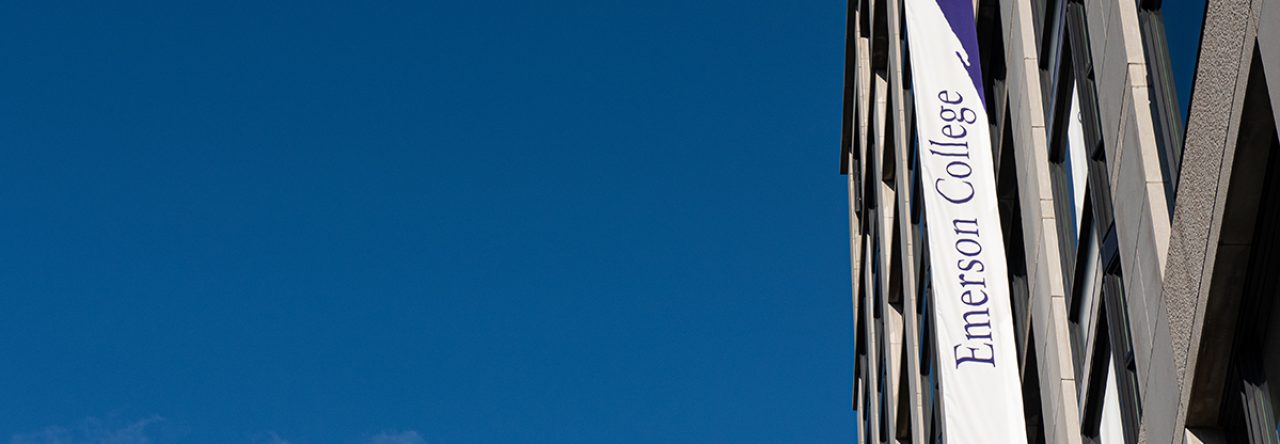Faculty Spotlight 2025-2026

How do neurodivergent parents influence the language development of their children?
Emerson College has been awarded a multi-year grant from the National Science Foundation (NSF) as a partner institution on a collaborative project with New York University focused on parent language input, and whether autistic and non-autistic parents speak differently when interacting with their children (LI+TLE Lab). The total collaborative award is $540,448, with Emerson receiving $240,801 for the three year project. The project was funded by the NSF through the Division of Behavioral and Cognitive Sciences. Rhiannon Luyster, a professor in the Department of Communication Sciences & Disorders is the principal researcher responsible for Emerson’s contribution to the project. For current Emerson students interested in her field of study, Professor Luyster teaches graduate courses on research methods and autism, as well as an undergraduate course on developmental psychology. About the NSF Awards: Lead collaborator New York University (NSF Award #2521482) in collaboration with Emerson College (NSF Award #2521483).
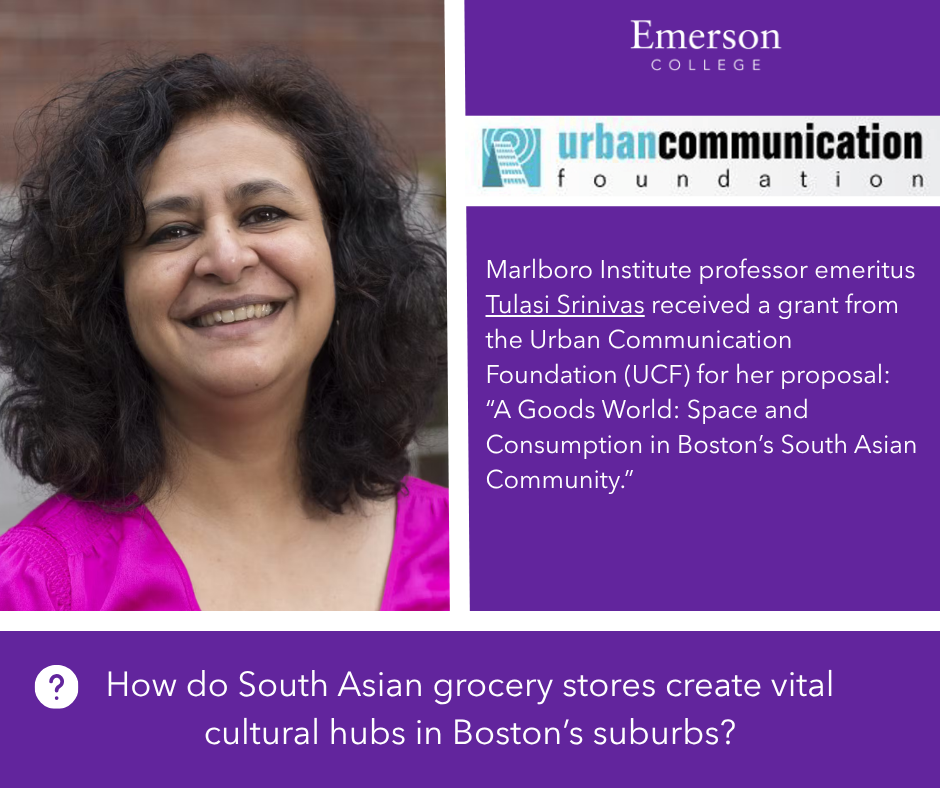
How do South Asian grocery stores create vital cultural hubs in Boston’s suburbs?
Professor emeritus Tulasi Srinivas was awarded a $1,850 research assistance grant from the UCF to examine how South Asian grocery stores create vital cultural hubs in Boston’s suburbs and are actively reshaping the suburban landscape through unique sensory, commercial, and social practices. Her research involves actively engaging in photography, mapping, and scholarship of these storefronts to contribute to UCF and other broader conversations on the subject of urban studies along with other hot button issues such as immigration, gentrification, mainstreaming, and cultural geography in the Boston community. Srinivas found that these local storefronts challenge standardized American foodscapes while also fostering community, cultural continuity, and urban transformation.
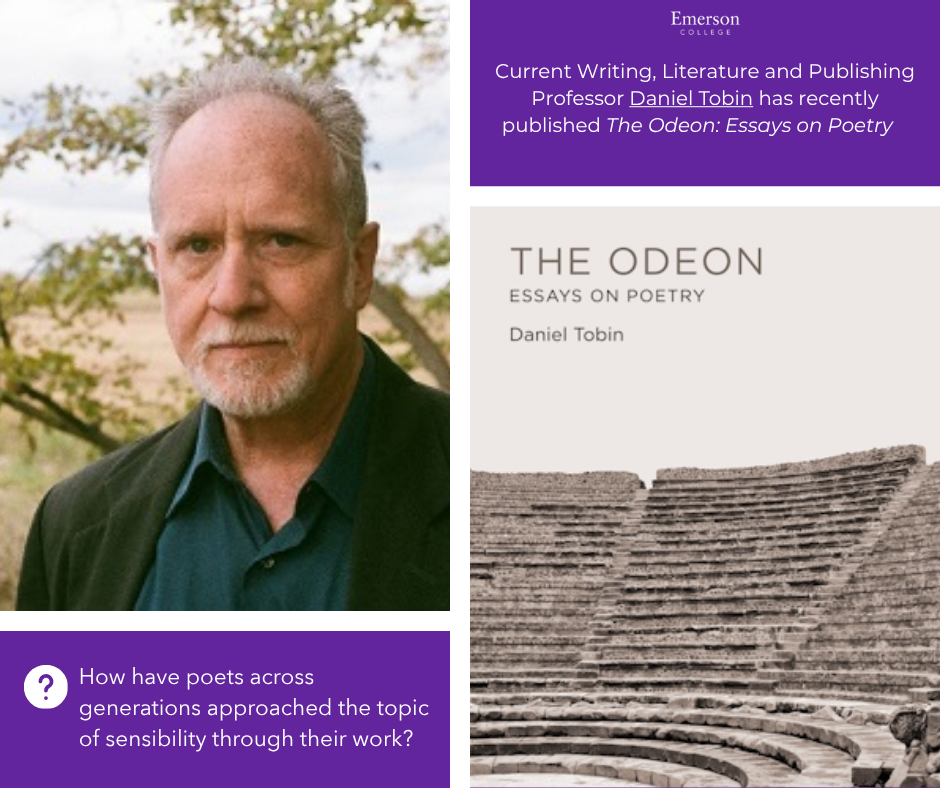
How have poets across generations approached the topic of sensibility through their work?
Current Writing, Literature and Publishing Professor Daniel Tobin has recently published The Odeon through Louisiana State University Press. His essays focus on a wide variety of writers, ranging from John Donne and Emily Dickinson to writers from the twenty-first century such as Mark Doty, Louise Glück, and Carl Phillips. With the central question of “sensibility” and its various social, philosophical, and aesthetic connotations, the collection presents a sequence of related essays exploring both resonances and dissonances in the traditions of modern and contemporary poetry. Professor Tobin received indexing support for this book from the Hub Fund for Advancing Research.
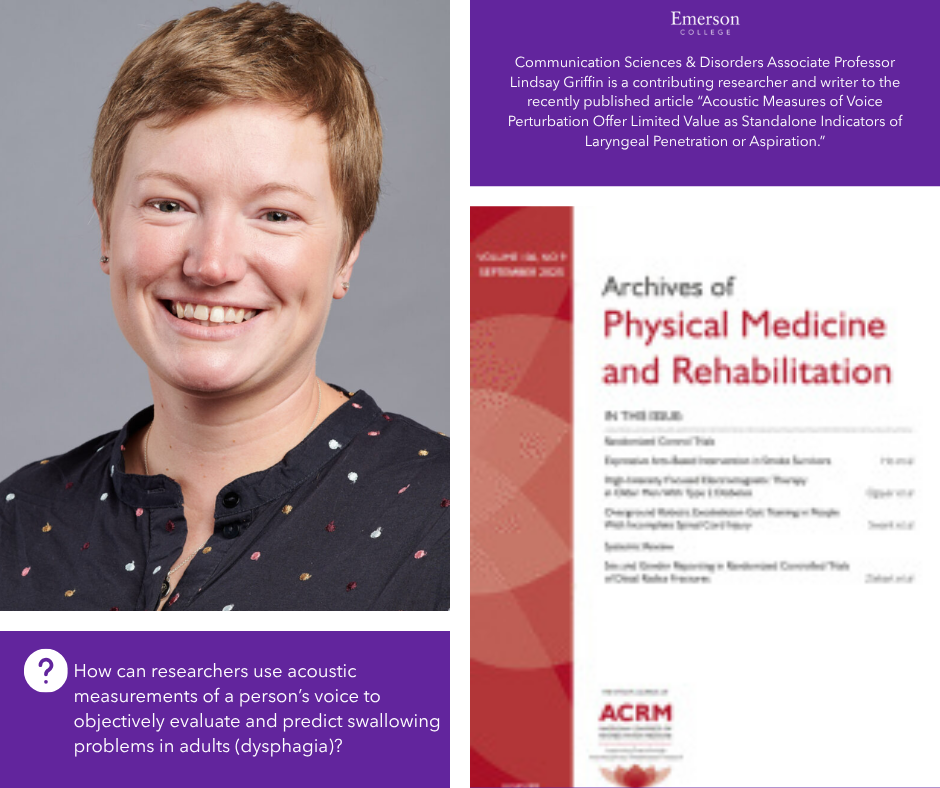
How can researchers use acoustic measurements of a person’s voice to objectively evaluate and predict swallowing problems in adults (dysphagia)?
Communication Sciences & Disorders Associate Professor Lindsay Griffin is a contributing researcher and writer for the article “Acoustic Measures of Voice Perturbation Offer Limited Value as Standalone Indicators of Laryngeal Penetration or Aspiration” that was published in the September 2025 issue of the peer-reviewed journal: Archives of Physical Medicine and Rehabilitation by Elsevier on behalf of the American Congress of Rehabilitation Medicine. Current Emerson students interested in gaining research experience with adult swallowing disorders are encouraged to contact the EATS Lab.
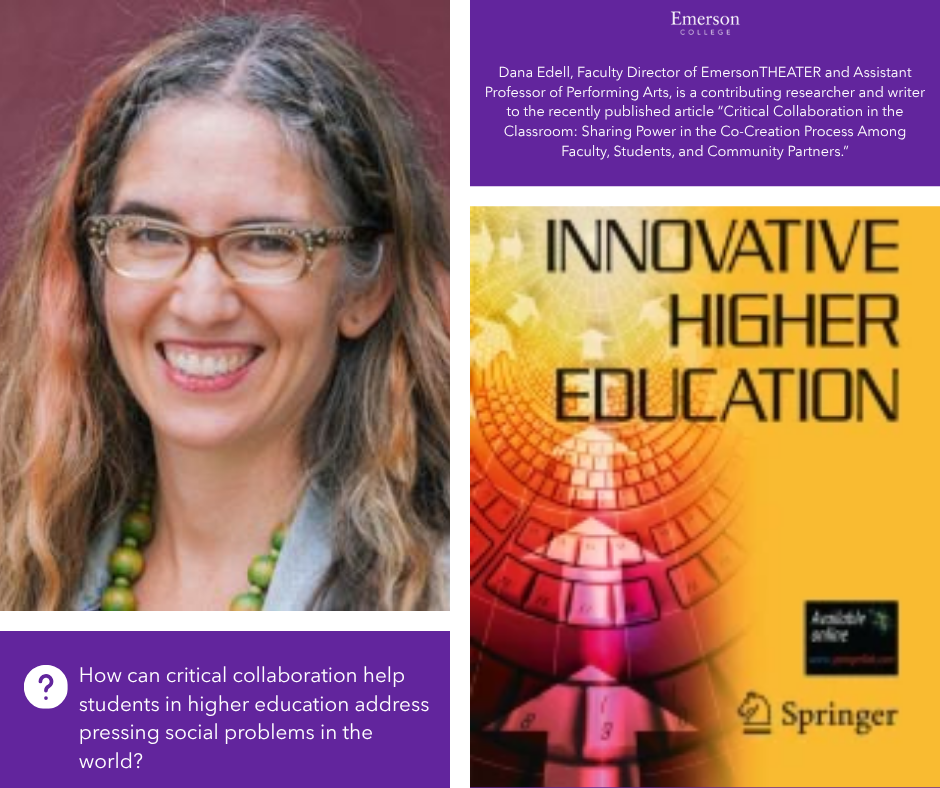
How can critical collaboration help students in higher education address pressing social problems in the world?
Dana Edell, Faculty Director of EmersonTHEATER and Assistant Professor of Performing Arts, is a contributing researcher and writer to the recently published article “Critical Collaboration in the Classroom: Sharing Power in the Co-Creation Process Among Faculty, Students, and Community Partners” in Innovative Higher Education. Her research explores how collaboration, partnerships, and community-engagement are increasingly important as higher education institutions face pressure to prepare students for the workforce and contribute to the public good, highlighting open listening, recognition of diverse forms of expertise, clarity of shared outcomes, and collective decision making as key factors in “critical collaboration.”
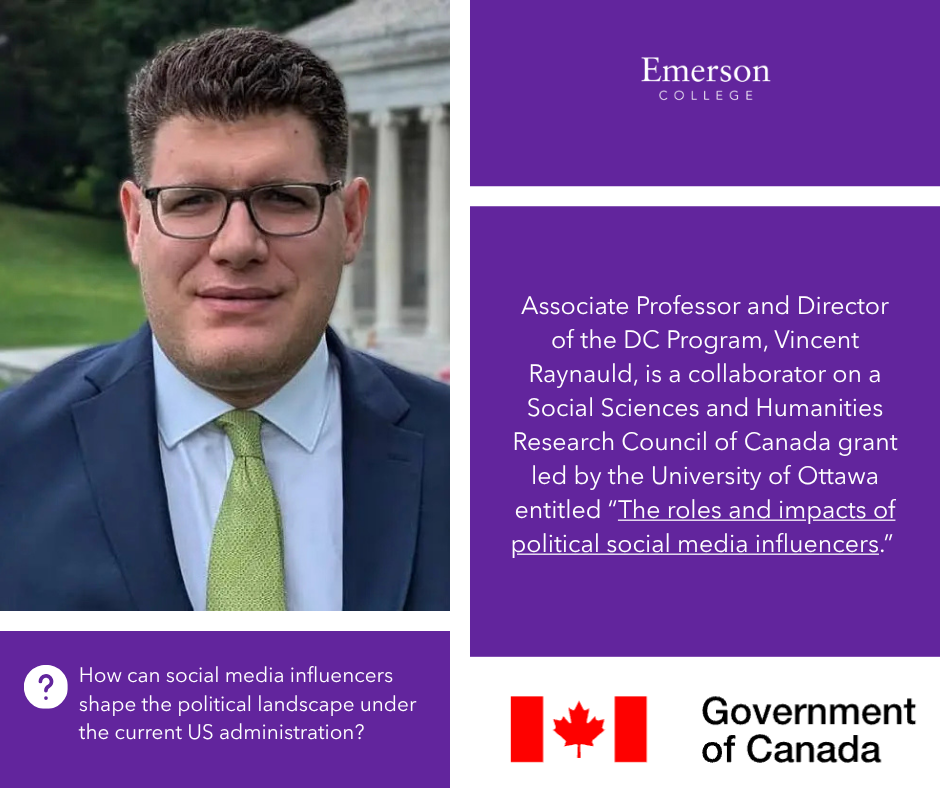
How can social media influencers shape the political landscape under the current US administration?
Communications Studies Department Associate Professor and Director of the DC Program, Vincent Raynauld, is a collaborator on a Social Sciences and Humanities Research Council of Canada grant led by the University of Ottawa entitled “The roles and impacts of political social media influencers.” The six year $184,000 grant ($252,000 in Canadian dollars) will study how social media influencers are changing the way people get their political news, and the degree of influence they have. Read more in Emerson Today.

How do new surveillance technologies and the political economy of media complicate the ethics of visual journalism when covering protests?
Gino Canella, Associate Professor & Associate Chair in the Journalism Department, wrote the article, “Anonymous Dissent: Protest, Privacy, and Photographic Surveillance in Digital Media” that appeared in the June 2025 issue of New Media & Society, a peer-reviewed journal published by SAGE. This article explores the nuances and challenges in ethical journalism as new surveillance technologies and the political economy of media are rapidly developing.

How can fantasy sports be used for developing aspects of sports communication skills and strategies needed for professionals seeking to work in the industry?
Lauren Anderson’s article “Making fantasy reality: Fantasy sport simulations as immersive sports communication classroom experiences” appeared in the July 2025 issue of Communication Teacher, a peer-reviewed journal published online by Taylor & Francis. Her work explores how fantasy sports can be used as a tool for developing aspects of communication skills and strategies needed for professionals seeking to work in the sports communications industry.
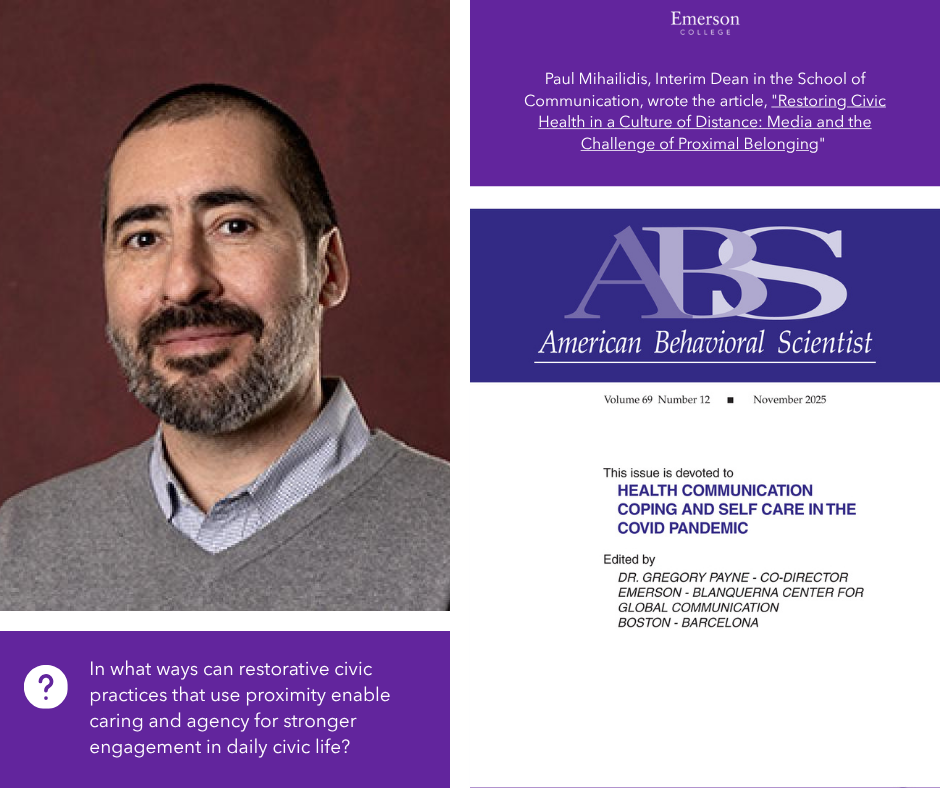
In what ways can restorative civic practices that use proximity enable caring and agency for stronger engagement in daily civic life?
Paul Mihailidis, Interim Dean in the School of Communication, wrote the article, “Restoring Civic Health in a Culture of Distance: Media and the Challenge of Proximal Belonging” that appeared in the August 2025 issue of American Behavioral Scientist, a peer‑reviewed journal published by SAGE. His research highlights the need for a clear understanding of the relationship between our digital technologies and our lived environments.
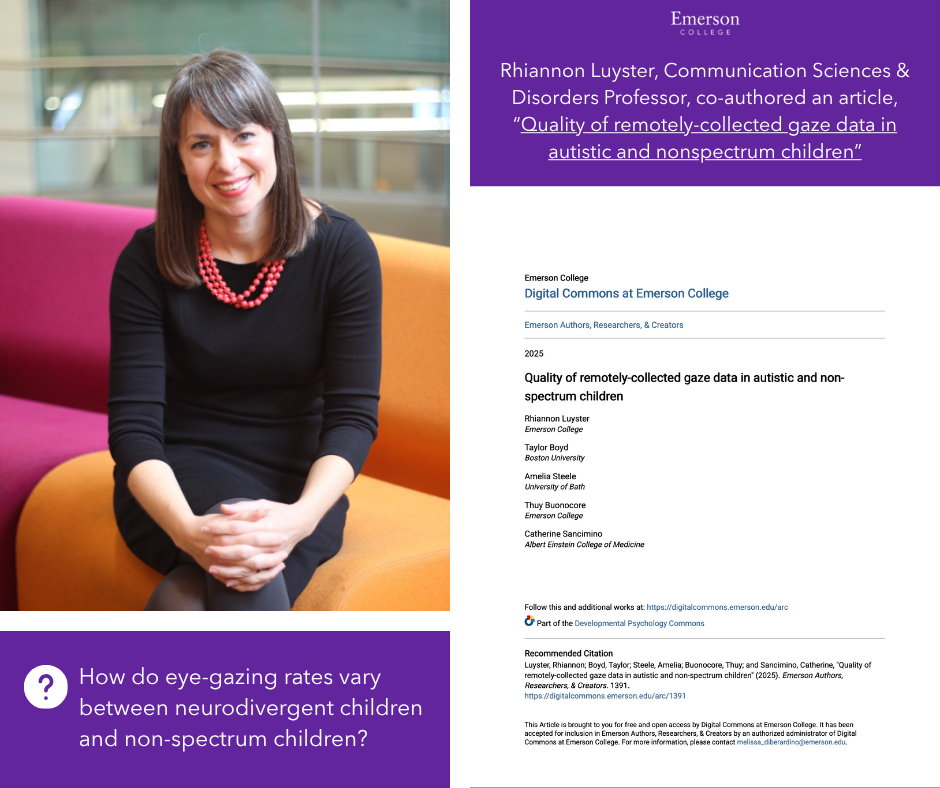
How do eye-gazing rates vary between neurodivergent children and non-spectrum children?
Rhiannon Luyster, Communication Sciences & Disorders Professor, co-authored an article, “Quality of remotely-collected gaze data in autistic and non-spectrum children,” which appeared in the June 2025 issue of Language Development Research, an open-access peer-reviewed journal out of Carnegie Mellon University. Her research explores her eye-gazing data collection on autistic and non-spectrum children and the applications it has to her previous research.
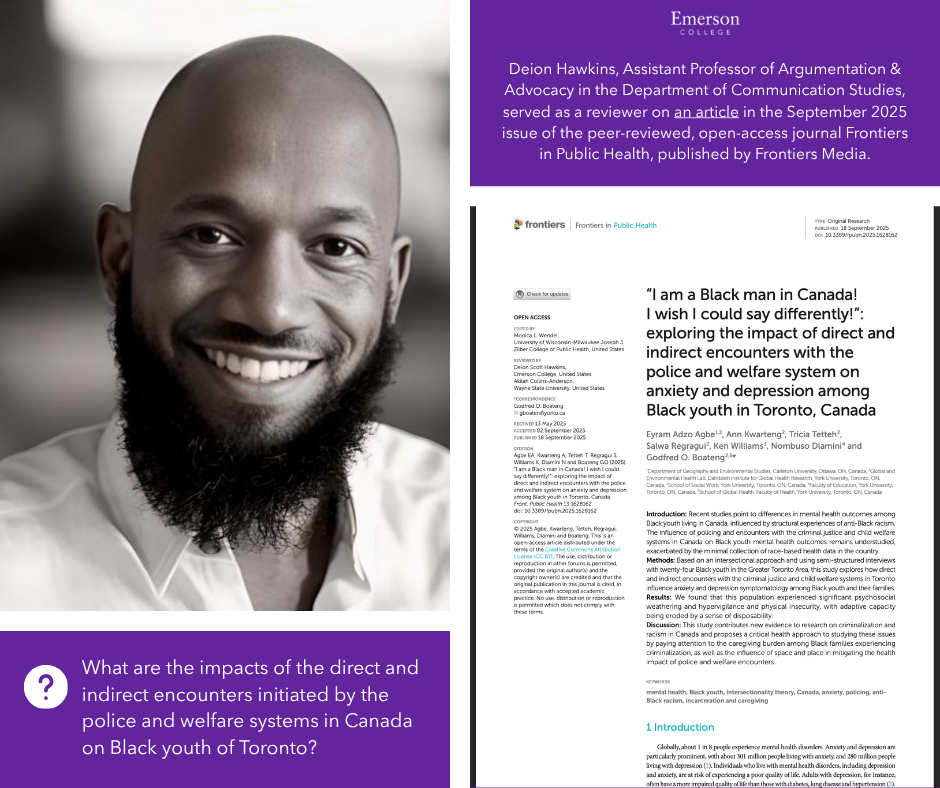
What are the impacts of the direct and indirect encounters initiated by the police and welfare systems in Canada on Black youth of Toronto?
Deion Hawkins, Assistant Professor of Argumentation & Advocacy in the Department of Communication Studies, served as a reviewer on an article in the September 2025 issue of the peer-reviewed, open-access journal Frontiers in Public Health, published by Frontiers Media.
